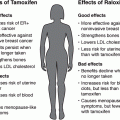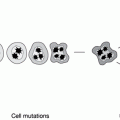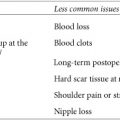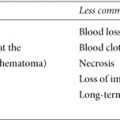Chapter 14
Managing Lifestyle Choices
WE CAN’T NEGATE THE FACT THAT AGE, inherited predisposition, and other factors beyond our control increase cancer risk. But cancers don’t develop overnight. Carcinogenesis, the multistep evolution from normal cell to cancer, usually takes several years, providing opportunity (especially the younger we are) to potentially offset inherited risk with intervening behaviors. Being genetically predisposed doesn’t necessarily mean you’re destined to develop cancer unless something in your lifestyle, environment, or the aging process creates irreparable damage that prompts damaged cells to replicate out of control and form tumors.
We don’t have enough large well-controlled studies to know exactly what causes breast or ovarian cancer in people of average or high risk, or exactly how lifestyle and environmental factors influence risk. One research project—or ten or twenty—doesn’t necessarily produce unequivocal results. Studies conducted in different ways with different controls often reach conclusions that don’t necessarily prove cause and effect. An observational study of more than thirty-five thousand postmenopausal women, for example, suggested those who regularly used fish oil supplements were less likely to develop breast cancer over the next six years.1 However, the study didn’t look at other influencing factors.
Health experts can’t recommend one behavior or another until clinical trials prove it beneficially affects human cancer risk or at the very least won’t cause harm. Even laboratory tests that produce results in rats are just a step in the process. That’s why trying to act on every research report in the news—“soy protects against breast cancer risk,” or “soy increases breast cancer risk”—can make you crazy. Although scientists haven’t yet discovered many controllable factors that affect cancer risk, we can focus on four that are well studied: nutrition, weight, physical activity, and alcohol consumption.
The Three-Legged Stool: Nutrition, Weight, and Physical Activity
Most confirmed data about the effect of lifestyle behaviors on the risk for disease, including breast and ovarian cancer, can be summed up in just three words: nutrition, weight, and exercise. Combined, these closely related risk factors are like the three legs of a stool. Control all three and you have a balanced approach to limiting cellular damage that can progress to disease. Allow any one element to get out of whack, and your risk may tip in favor of cancer.
Nutrition
While a direct link between most individual foods and cancer hasn’t been made, the indirect relationship is clear: your body needs essential nutrients to function optimally, with a strong immune system that can better repair genetic damage before cancer occurs. Managing what you eat to control your weight is also important, because being overweight increases the likelihood of developing heart disease, diabetes, and cancer.
Cancer was less prevalent during your grandparents’ time. It’s probably no coincidence that they were more active than you are and ate a more nutritious diet than you do today. Eating habits and food sources were very different forty or fifty years ago, with little or no fast food. Our rate of cancer is much higher than the rate in Africa, Asia, and other cultures where fruits, vegetables, and whole grains account for 50 to 90 percent of the average diet. A consistent diet of foods with hormones, transfats, processed sweeteners, and artificial fillers may cause DNA changes that can lead to cancer. If our children follow the same damaging lifestyle patterns, they’ll continue the cycle of damage and disease. In fact, what you eat may affect your children and grandchildren’s risk for cancer, regardless of their diet. Georgetown University Medical Center researchers showed that rats who ate a fatty, unhealthy diet passed on DNA damage and increased breast cancer risk to their daughters and granddaughters; half the grandchildren developed breast tumors, even though they ate a normal diet. When both grandmother rats ate fatty diets, 80 percent of subsequent grandchildren developed tumors.2 This may partially explain why certain cancers run in some families, even in the absence of a specific genetic mutation.
The exact effect of diet and its impact on hereditary cancer risk is still unclear. A high-fat diet is known to increase heart disease, blood pressure, and many other health problems—at least one study linked a high-fat diet during adolescence with increased premenopausal breast cancer risk—yet it hasn’t been proved to increase cancer risk.3 Although evidence doesn’t decisively show that a diet high in vegetables reduces breast and ovarian cancer risk, research increasingly emphasizes the value of plant-based foods. Low-calorie, high-fiber produce contains more than fifty-five nutrients and phytochemicals, which have antioxidant properties that protect cells and help repair DNA damage. Cruciferous vegetables (broccoli, Brussels sprouts, cauliflower); orange, red, and purple fruits and vegetables; tea; and red wine are rich in both nutrients and phytochemicals. The American Institute for Cancer Research recommends meals that are two-thirds or more fruits, vegetables, beans, and whole grains, and one-third or less lean protein.
Are Some Foods Protective?
It’s very difficult to study how diet affects cancer risk over a lifetime, because researchers can’t control the long-term diets of study participants, and when questioned, people often don’t accurately recall what they’ve eaten over many years. Even though breast cancer has been studied more than ovarian cancer, including relationships between diet and risk, results are often inconsistent. Many foods, including green tea, garlic, mushrooms, avocados, and others (see chapter 17 for specific information about pomegranate for prostate cancer), contain beneficial nutrients and phytochemicals. None is proved to prevent cancer. Genes affect how our bodies metabolize and use medications like tamoxifen; it’s likely they also affect how we metabolize food. Scientists won’t be able to predict how particular foods affect breast or ovarian cancer, and specifically hereditary risk, until they’re able to isolate and understand harmful or beneficial compounds in various foods and explain how genetically different individuals metabolize them. For now, experts recommend balanced meals that include a variety of nutritious foods. An observational study of women with BRCA mutations found lower breast cancer risk in those who had varied diets.4
The link between dietary soy and breast cancer risk has been studied extensively, producing inconclusive results. Women in the United States are more likely to develop and die from breast cancer than women throughout Asia, where the population consumes less fat and where soy is a staple. When Asian women move to the United States and assume our lifestyle, their breast cancer rates rise, becoming similar to ours in a few generations. Researchers theorize that the Asian high-soy diet might be the protective factor, yet studies haven’t consistently proved that soy is responsible for the reduced risk. No specific research has examined the direct effect of soy on BRCA-related cancer risk.
Soy has been studied extensively, with conflicting results. Along with many other legumes and vegetables, it contains high levels of phytoestrogens, plant-based estrogens that may act like tamoxifen and block the effects of estrogen on breast tissue. On the flip side, phytoestrogen may also act like weak estrogen, and some oncologists recommend women with ER+ cancers avoid it altogether. Soy is a complete source of protein for vegetarians, however, and most experts consider eating it three times a week to be safe, even for survivors. Because the long-term safety of consuming highly concentrated soy phytoestrogens is unknown, soy supplements and beverages or food products containing concentrated soy additives should be avoided. Some studies link diets high in phytoestrogens to reduced breast cancer risk; others show it may not have a significant effect. When researchers analyzed twenty-one studies of lignans—a type of phytoestrogen in many fruits, vegetables, and whole grains—they found that postmenopausal women who ate lignan-rich foods were 14 percent less likely to develop breast cancer than those with low intakes.5 (Flaxseed is the best food source of lignans.) Premenopausal women didn’t have the same reduced risk, and the study didn’t specifically address women with BRCA mutations.
Numerous large studies in various countries consistently show no link between midlife intake of dairy and increased breast cancer risk. What you eat during adolescence and young adulthood, however, may affect your risk later in life. Dairy products in young adulthood may lower the risk for breast cancer, but some evidence suggests high-fat dairy such as butter may be detrimental.6 Nonfat dairy is safer, if not beneficial, compared to high-fat dairy products. Whole milk is appropriate for toddlers or people who have trouble getting the fat and calories they need. It’s not the best choice for most adults. One cup of whole milk has 150 calories and 8 grams of fat. Low-fat milk is better, although it still has 120 calories and 5 grams of fat. Nonfat (skim) milk has the same amount of protein and calcium, with just 80 calories and less than 1 gram per serving of fat.
Supplements
Despite what you may have heard or read, little clinical evidence supports the premise that supplements reduce cancer risk, and high doses of some supplements may actually increase cancer risk. Promising research is under way, yet experts can’t recommend specific quantities of selenium, lycopene, caffeine, or various supplements and antioxidants to lower cancer risk. Having sufficient levels of vitamin D is important because, aside from helping the body absorb calcium, it reduces inflammation and modulates the immune system. Although salmon and sardines are good sources, as are fortified milk and cereals, most vitamin D is made in the body when skin is exposed to sunlight—just fifteen minutes per day is sufficient. Although several observational studies indicate vitamin D may be helpful against breast and colon cancer, research results on its effect on prostate and pancreatic cancer risk have been mixed. Clinical trials are under way to evaluate the effects of vitamin D in high-risk women. Researchers are also studying whether diindolymethane (DIM), a natural compound found in cruciferous vegetables, may lower breast cancer risk in BRCA mutation carriers.
Fish oil, another component of Asian diets, is a rich source of omega-3 fatty acids. It may lower breast cancer risk in the general population; no studies have reviewed the oil’s effect in women with BRCA mutations. In an observational study of thirty-five thousand postmenopausal women, those who said they regularly used fish oil supplements were one-third less likely to develop breast cancer over the next six years than nonusers.7 Researchers are investigating whether fish oil and vitamin supplements affect breast cancer and prostate cancer risks. Salmon, tuna, sardines, trout, and mackerel are good sources of omega-3. Some have high levels of mercury, so limit consumption to two or three servings a week of wild-caught fish. Farmed salmon tends to have more contaminants and less omega-3. For many people, fish oil capsules are more readily available and convenient. Walnuts, flaxseeds, sesame seeds, and certain vegetables have oils that include alpha-linolenic acid, a molecule that our bodies can convert to omega-3 fatty acids.
Too Much of the Good Life: Controlling Your Weight
You’ve heard it time and again, and it bears repeating: your weight matters. Two-thirds of Americans over age 20 are overweight, and one-third are obese, increasing their odds of many health conditions, including breast cancer. We eat too many of the wrong things and simply eat too much. Obesity has doubled among adults in the last twenty years and more than tripled among adolescents in that time.8 According to the American Institute for Cancer Research, poor diet, physical inactivity, and excess body fat cause one-third of all cancers, including postmenopausal breast cancer, among Americans.9 That’s bad news for us, and it’s worse for our children, who may be the first generation in U.S. history to have shorter life expectancies than their parents because of excess weight. Some of the strongest evidence shows that excess fat increases estrogen levels. It may also reduce immune function and raise cellular stress that can cause DNA damage. American Cancer Society research found a higher rate of death from ovarian cancer in obese women; the heaviest women had a 50 percent greater risk.10
Stay updated, free articles. Join our Telegram channel

Full access? Get Clinical Tree








